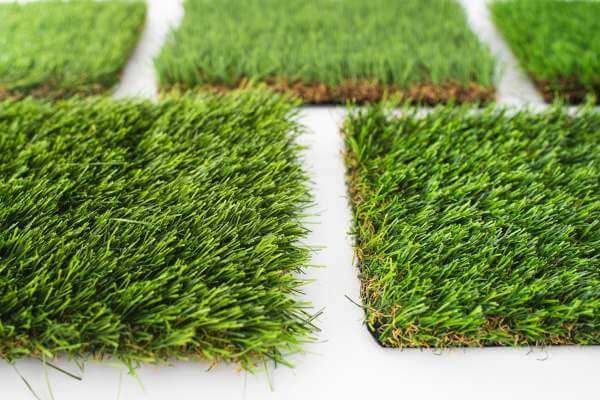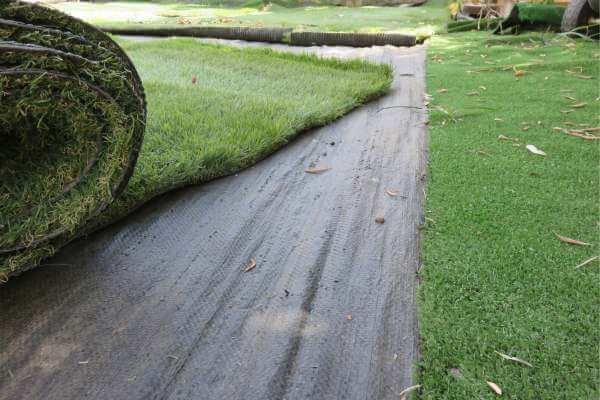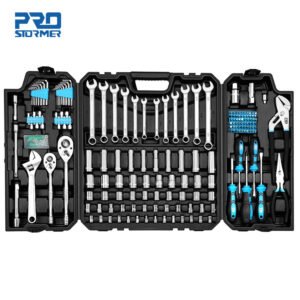Blog
Synthetic Grass Installation – 7 Easy Step-By-Step Guide
In pursuing a lush, green lawn, homeowners are increasingly turning to synthetic grass as a versatile and low-maintenance alternative. Synthetic grass, also known as artificial turf, offers a plethora of benefits ranging from water conservation to year-round aesthetic appeal. In this article, we’ll delve into the art of synthetic grass installation, exploring the process, its advantages, and why it might be the perfect choice for your outdoor space.
The Synthetic Grass Installation Process:

1. Site Preparation:
The journey to a vibrant synthetic lawn begins with meticulous site preparation. This involves removing existing grass, weeds, and any debris. The goal is to create a smooth and level surface for the synthetic grass installation.
2. Base Installation:
A stable base is crucial for the longevity and performance of synthetic grass. Typically, a layer of crushed stone or decomposed granite is applied, followed by compacting to ensure a firm foundation. This step sets the stage for proper drainage and prevents uneven surfaces.
3. Edging Installation:
To define the boundaries and maintain the shape of your synthetic lawn, durable edging materials are installed around the perimeter. This not only adds a polished look but also secures the edges of the artificial turf.
4. Weed Barrier Fabric:
A weed barrier fabric is laid over the prepared surface, acting as a protective shield to prevent weed growth. This layer ensures a maintenance-free and pristine appearance over time.
5. Synthetic Grass Unrolling:
The star of the show – the synthetic grass – is carefully unrolled over the prepared base. Precision is key during this step to achieve a seamless and natural appearance.
6. Trimming and Securing:
Once the synthetic grass is in place, it undergoes meticulous trimming to fit the specific contours of the area. It is then securely anchored using nails or staples, ensuring a snug and even fit.
7. Infill Application:
Infill material, typically a sand and rubber mixture, is evenly distributed over the synthetic grass. This enhances the aesthetics and provides stability and resilience, mimicking the feel of natural grass.
Advantages of Synthetic Grass Installation:
1. Low Maintenance:
Say goodbye to mowing, watering, and fertilizing. Synthetic grass requires minimal maintenance, freeing up your time for more enjoyable activities.
2. Year-Round Greenery:
Regardless of the season or weather conditions, synthetic grass maintains its vibrant green appearance. Enjoy a lush lawn throughout the year.
3. Water Conservation:
Synthetic grass significantly reduces water consumption, making it an eco-friendly choice in regions where water is a precious resource.
4. Durability and Longevity:
Engineered for durability, synthetic grass withstands heavy foot traffic, pet activity, and harsh weather conditions. With proper care, it can last for many years.
5. Allergen-Free:
Say farewell to seasonal allergies associated with natural grass. Synthetic grass creates an allergen-free environment for your family and pets.
-
1PCS Artificial Potted Plant Scene Desktop Home Office Shelf Decor Tabletop Landscape Bonsai Wedding Room Party Accessories Vine
$13.71 – $13.89 -
228PCS Auto Repair Hand Tool Set
$149.99 -
24 LED Rose Tree Lights USB Plug Table Lamp Fairy Flower Night Light For Home Party Christmas Wedding Bedroom Decoration Gift
$23.52 – $23.76 -
3/5Pcs Hydrangea Artificial Flowers Bouquet For Home Bedroom Decor Wedding Decoration Craft Vases Flower Arrangement Accessories
$13.71 – $16.46 -
6/8/10 LED Solar Garden Lights
$14.95 – $18.95 -
75cm Long Artificial Vines Leaves Fake Hanging Plants Silk Tree Leafs Green Bamboo Winding Rattan For Home Garden Wedding Decor
$18.47 – $18.62 -
Artificial Plants Bonsai Fake Plants Home Decoration Accessories Plant Plant Pot Office Decoration Living Room Decoration
$16.38 -
Artificial Plants Bonsai Small Tree Pot Fake Plant Flowers Potted Ornaments For Home Room Table Decoration Hotel Garden Decor
$16.22 – $18.67 -
Artificial Plants Bonsai Small Tree Pot Plant
$14.61
Conclusion:
The installation of synthetic grass is not merely a landscaping choice but a transformative investment in your outdoor space. From reducing environmental impact to providing a visually stunning and functional lawn, synthetic grass installation offers a myriad of advantages. Embrace the green revolution, liberate yourself from the constraints of natural grass maintenance, and unveil the beauty of a perpetually lush lawn with synthetic grass. Consult with professional installers to embark on a journey to a greener, more sustainable outdoor haven.










